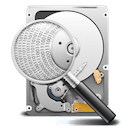HDDScan is a service utility for Windows. Designed for maintenance, testing and diagnostics of information media (Flash, RAID, HDD). Can identify and "isolate" BAD sectors.
Allows interacting with S.M.A.R.T attributes and debugging "technical indicators" (regulate power consumption, start/stop spindle, tune acoustic mode etc.). Supports SCSI/ATA/SATA/IEE-1394/USB/FireWare synchronization. Can test drives in several ways, including Butterfly "random data reading" technology.
HDDScan features
- Synchronizes with selected hard drives via SCSI/ATA/SATA/IEE-1394/USB/FireWare interfaces;
- Uploads, analyzes, and visualizes technical data from information drive controllers (temperature, power consumption, spindle speed, etc.);
- Performs deep drive scanning, identifies and "isolates" BAD sectors;
- Initiates a linear verification/write/read mode of the information stored on the drive, logs the process;
- Initiates "read random data" mode with Butterfly technology, logs the process;
- Modifies S.M.A.R.T. attributes of the specified drive according to user edits;
- Tests the performance of data storage devices synchronized through ATA/SATA/USB/FireWire interfaces with specified S.M.A.R.T. attributes;
- Analyzes the log tables of SCSI-interface information media;
- Outputs the processed information in a visualized report video, highlighting "problems" in the interface;
- Changes the interface visual design according to a user-selected "skin".
Utility Features
- Ability to synchronize with most of the most commonly used data transfer protocols in information media;
- Relatively high accuracy of statistical data;
- Several test modes for data carriers;
- S.M.A.R.T. debugging feature;
- Tools for identifying and "isolating" BAD sectors;
- Support for SCSI interface;
- Detailed visualized reports;
- Several preset graphical "skins" for the interface.
Disadvantages
- It is not possible to interact with drives with "read only" property;
- During "isolation" of BAD sectors "working" sectors in close vicinity are also disconnected;
- SCSI virtual disks do not always react "adequately" to tests;
- Unreasonable change of S.M.A.R.T attributes may "kill" the data medium


Add comment